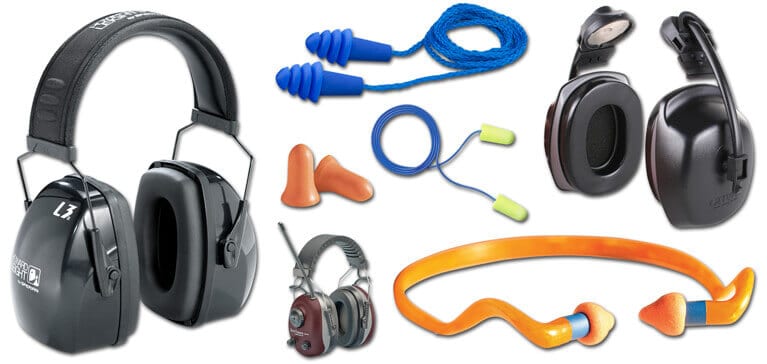With autumn approaching I can already hear the leaf blowers blowing as the leaves are just beginning to fall. The newspaper inserts are reminding us that hunting season is right around the corner. Autumn is a noisy time of year.
Several weeks ago I saw my first well being drilled. My son is building not too far from the house, so my husband and I went to watch the big event. As a true audiologist I have several sound level meter apps on my phone. At 92 decibels, their drill rig was crazy loud. I was thankful we remembered our hearing protection. I was disappointed that only two of the five men working wore hearing protection. One of the men said he had been drilling for 34 years and has never worn hearing protection. He already has ringing in his ears. I think we may see him later for hearing help as he has most definitely damaged his auditory system.
Noise can be bothersome and sometimes fun, but in all cases, a sound that is too loud for too long can damage one’s hearing. Repeated exposure to hazardous sound can cause permanent hearing loss, tinnitus (ringing in the ears) and trouble understanding speech in background noise. The best way to prevent noise-induced hearing damage is to reduce exposure by turning down the volume, moving away from the sound, or limiting exposure time. If you cannot take any of those steps, then you should use hearing protection. Follow these guidelines to choose the right hearing protection.
- Know how much noise reduction you need. The National Institute for Occupational Safety and Health (NIOSH) recommends wearing hearing protection whenever sound levels are above 85dBA or higher. Check how loud a sound is by using a sound measuring app, such as the NIOSH Sound Level Meter. If you do not have an app, a good rule of thumb is; noise is too loud if you need to shout to be heard by someone an arm’s length away.
Hearing protectors are labeled with a Noise Reduction Rating (NRR). However, the NRR is measured in a laboratory and most people get far less noise reduction than the NRR suggests. Fortunately, most hazardous sounds require just 5 or 10dB of noise reduction to be safe, and almost any hearing protector, when fit correctly, can provide 10dB of protection. An easy way to know whether your hearing protection is fit correctly is to listen for a change in how you hear your own voice; if your voice sounds deeper, fuller, and more hollow, you likely have a good fit.
If the noise is 100dBA or greater (such as chainsaws or jackhammers) or if it is impulsive (such as nail guns or firearm noise), you should wear double hearing protection (earmuffs over earplugs).
- Think about the listening situation. Factors beyond noise levels need to be considered. For example, will you be wearing eyeglasses, sunglasses or eye protection? What about hats, helmets or head protection? Eyeglass frames and headgear can interfere with the seal of an earmuff, making earplugs a better choice. Will your hands be getting dirty? If so, avoid foam earplugs, which must be rolled down with your fingers before insertion. Will it be very hot or very cold? Earmuffs can be uncomfortable in hot environments; earmuff cushions may not seal tightly in very cold environments.
Consider the kinds of sounds involved. Will the noise be continuous or intermittent? Earmuffs and pre-formed earplugs are easier to remove and replace frequently than foam plugs. Corded protectors keep earplugs handy if you don’t have a pocket or purse. Will you be listening to music or need to talk to people while wearing hearing protection? Flat attenuation earplugs or earmuffs (also called musician’s earplugs) preserve sound fidelity and would be the best choice. Will the environment generally be quiet except for sudden bursts of sound such as firecrackers or target shooting? Level-dependent or sound restoration hearing protectors allow sound to pass through when it is quiet and become protective when it is loud.
- Consider comfort and convenience. Once you have narrowed your selection down to hearing protectors that are appropriate for your noise exposure and compatible with what you will be doing when you wear them, the choice is completely up to you! Remember, though, that hearing protection only works if you wear it consistently and correctly every time you are exposed to hazardous noise, so choose a protector that is comfortable and convenient.
I hope this gives you some helpful information. We stock various types of hearing protectors in the office so feel free to stop in (masks required) to see what we have and help you make the best choice for your needs. If you prefer, give Beth or Jamie a call at (704) 212-2376 to schedule an appointment or visit our website www.hearingsolutionsofnc.com. Jane and I look forward to seeing you soon.

